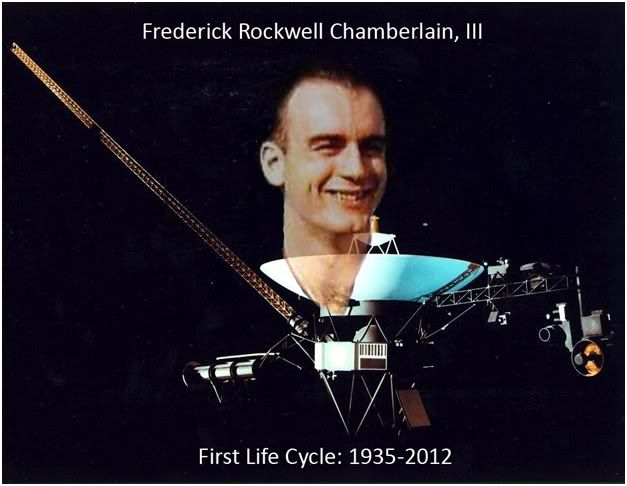
By Mike Darwin
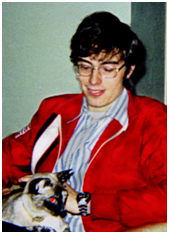
Me and Mei Lei, settling down after dinner and a peek at the heart of the time machine, which was then kept in a shed in back of the the Chamberlains’ home in La Crescenta, in 1973.
I was an 18 year old kid feeding quarters into a payphone in front of a Piggly Wiggly grocery store at 9 o’clock on a summer night in 1973, in Augusta, Georgia. On the other end of the line was a middle aged aeronautical engineer in La Crescenta, California, not far from the Jet Propulsion Laboratory, feeding me dreams. He wasn’t telling me about the spaceship he was working on to explore the outer planets, instead, we were talking about the time machine he was building to take us to the future. You see, I was helping him with the design – my part was the bubble trap, where pressure and temperature would be measured.

The “front-end” of the “time machine” in 1973, before the bubble trap was designed, fabricated and installed.
The engineer’s name was Fred Chamberlain, and we had met the year before at his home where he, his wife Linda and I had had dinner and had looked over the various parts of the time machine project. It was then that I noticed that the device was missing a critical component – a bubble trap – a device to prevent dangerous air bubbles from entering the circulatory system of the time traveler. Fred immediately saw the importance of the oversight and I set about designing a bubble trap that would fit into the device as he had already configured it.

The glass bubble trap for the “front-end” part of the “time machine” in use to perfuse Fred’s father in 1976.
We had been in correspondence for several years before we met. Though I was just a boy, we shared a dream to voyage into space and conquer the stars. To do that, both of us understood we would have to become time travelers, because we were trapped in a time and place that was wholly unsuited to our ambitions and aims. We had been born too soon. We were doomed to grow old and die before our species mastered the technology to venture forth from the world of our birth and set sail into the cosmos. The only way we could see out of this tragedy, Fred, Linda and me, was to become time travelers, in fact to become a very special sort of time traveler – medical time travelers.
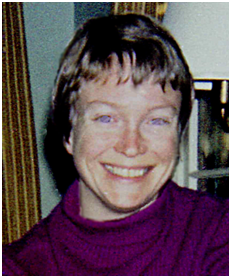
Linda Chamberlain in 1974.
What kid, then or now, wouldn’t kill to have a life like that? Isn’t that the stuff that dreams are made of and the juvenile SF novels are plotted around? Nobody has a life like that and everyone knows that a story like that couldn’t possibly be true. Have Spacesuit Will Travel? No doubt. Have time machine? Well, then then you’ll really go places!
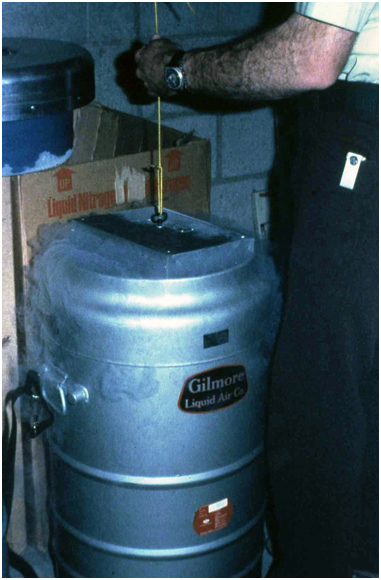
The working heart of the time machine!
And yet, every word I’ve written there is true, and I’ve got the pictures to prove it; and you’ve just seen them.
Fred Chamberlain was a NASA-JPL electrical engineer working on the Mariner-Jupiter-Saturn mission in 1973, and we had that conversation and many like it. And we planned the mission Fred began yesterday and many more like it before, and to follow. The time machine we were working on was actually for a “fourth” of us, not mentioned in my story, Fred’s father, Fred, Jr., and it was indeed used to launch him on his journey on 16 July of 1976. And yes, my bubble trap was an integral and a successful component of that mission.
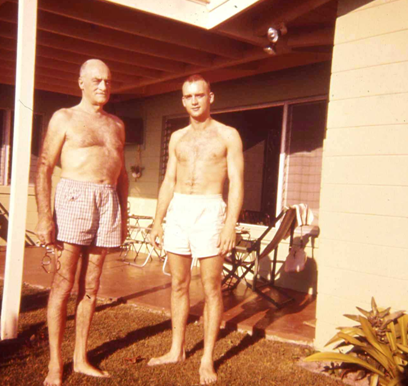
Fred, Jr., and Fred, III, father and son, now time travelers awaiting rescue.
Frederick Rockwell Chamberlain, III was and is of absolutely critical importance to cryonics. While most people with more than a passing acquaintance with cryonics will associate his importance with the founding of Alcor, that is in reality only a surrogate marker for his deeper importance. Fred came on the scene in cryonics in what was unarguably its darkest hour. It had degenerated into little more than a fraudulent cult in California and, everywhere in the US, it had lost all vestiges of technical and scientific rigor.
When Fred discovered this in his role as Vice President of the Cryonics Society of California (CSC) he not only left CSC and founded Alcor, he and Linda Chamberlain established, for the first time anywhere, the practice of scientific, evidence-based cryonics; cryonics based on the scientific method, on documentation of procedures, policies, cryopreservation protocols and rigorous patient case reports. He and Linda mandated not only scientific and technical accountability, but administrative, financial and legal accountability as well.
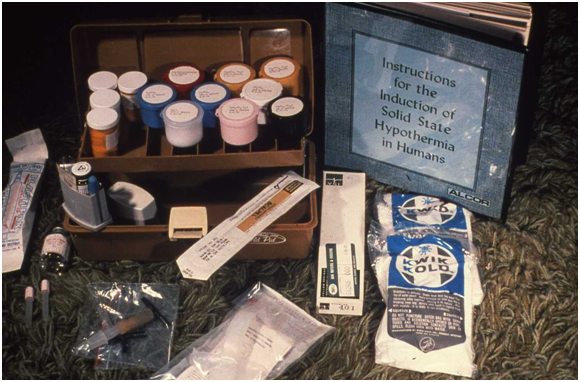
Standardized procedures, protocols, equipment and meticulous documentation were critical elements Fred and Linda Chamberlain brought to cryonics.
In doing these things, Fred and Linda attracted and mentored others. Fred’s personality and his military background brokered no compromise and his mentoring profoundly shaped me and a few others, molding us into the irascible and generally disagreeable inhuman beings we are today. At one time Fred was responsible for replenishing the tritium supply of all of the hydrogen warheads in the US nuclear arsenal. Men given that responsibility do not suffer fools gladly.
Personally, Fred taught me a great deal about engineering; not about the mathematics of it, but about engineering at the systems level, about how to look at a complex problem and tease it apart without being overwhelmed by it. He had a fantastic ability to see and solve problems at a meta-level, and he was able to communicate that to others.
Fred Chamberlain helped to build three incredible machines all of which had their origin at roughly the same place and at roughly the same time; in the foothills of the Santa Monica mountains near Pasadena, California in the early 1970s. Two of these are the Voyager spacecraft, now on their way to the stars moving through the heliopause at 16.6 km/s and 19.4 km/s, even as I write this. The other, the medical time machine begun when I was a boy, even before that pay phone call in Georgia, is, for the moment, located in Scottsdale, Arizona and it is moving relentlessly forward with its precious cargo of time-stopped souls one slow day at a time. Godspeed to all of you!
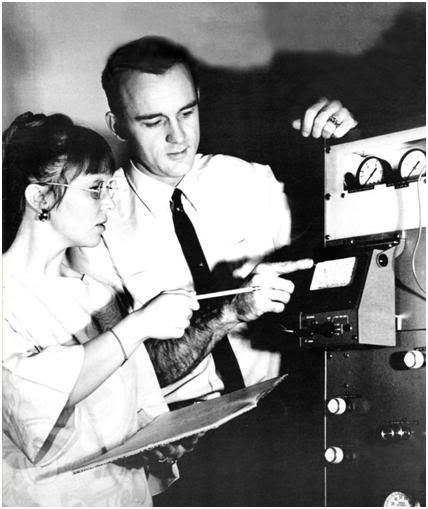
Fini.
Linda,
You can believe me when I say that I do have some idea of your loss. Only some, I’m sure. It has been a hell of a last few weeks for me, but nothing to what you’re going through now.
Man, oh man! I miss him already, and I haven’t laid eyes on him in years.
I remember all those years ago in La Crescenta, we were so young, and yet we were planning for this very goddamn eventuality. We were actually planning for it, thinking about it, talking about it, working towards it. We knew it would come, and in a weird sort of way, we hoped it would come, because the alternative would be that if it didn’t come for us at all, we would be one of the truly unlucky ones that fell through the cracks, like Marce did. Still, we have his loss to bear for now, and for some unknown seasons of tomorrows yet to come.
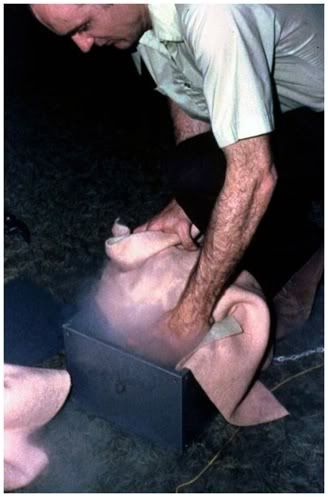 Fred (left) cryopreserving his own father, Fred Jr., in 1976.
Fred (left) cryopreserving his own father, Fred Jr., in 1976.
But remember Linda, it was just yesterday that we planned for this day now so soon arrived – a plan that has been, as we so rightly foresaw, flawlessly executed. Now, let us be patient just a “little” while longer, and work again, just a “little” bit harder, so that we can awaken tomorrow, and find that that other day that we talked about, dreamed about, planned for and worked towards has also arrived, in which we find ourselves together again – not in “paradise,” but in this world, planning for, thinking about, talking about and working towards those other dreams that we had to put on hold, simply in order to survive.
Let us look forward to those goals and dreams and many, many more still undreamt and unimagined, to which we shall again apply ourselves when the tear-blindness of our grief subsides.
Mike Darwin
Fred Chamberlain III: First Life Cycle: 1935-2012
by Linda Chamberlain
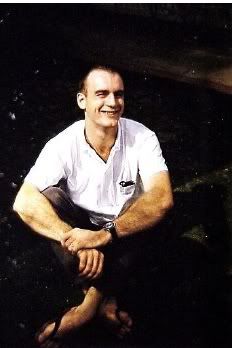 Fred Chamberlain III recently had his brain placed into cryostasis at the Alcor Life Extension Foundation in Scottsdale. His physical presence will be missed by many friends, biological family and chosen family until technology allows a future instantiation to be with us once again.
Fred Chamberlain III recently had his brain placed into cryostasis at the Alcor Life Extension Foundation in Scottsdale. His physical presence will be missed by many friends, biological family and chosen family until technology allows a future instantiation to be with us once again.
Among his many talents, Fred wrote inspiring poetry and loved to play the guitar and keyboard. He was one of the most intellectually creative and energetic people I’ve had the privilege to know. He just recently published BioQuagmire, which in my opinion is the best transhuman, life extension novel ever written. Fred (together with me and other authors) published a volume of life extension and transhumanist short stories in the 1980s called Life Quest.
The picture above shows Fred when he was in his twenties working in bomb disposal as a Navy diver. He was interested in ethics and was a strong supporter of Ayn Rand’s ideology. Fred became actively involved in cryonics in 1969 in order to get his father, Fred Chamberlain Jr., suspended (Alcor News, August 1976). Fred and I met and became Forever Buddies in 1970 while working on the committee to organize the second national cryonics conference, held in Los Angeles, CA.
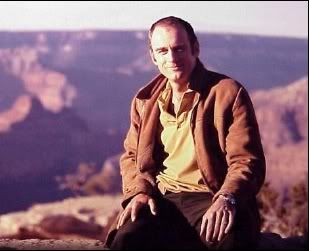 Here we see Fred in his thirties, sitting on the rim of the Grand Canyon. He was an engineer at the Jet Propulsion Laboratory (JPL) in Pasadena, Southern California, where he worked on the Voyager missions to Jupiter and other fascinating projects.
Here we see Fred in his thirties, sitting on the rim of the Grand Canyon. He was an engineer at the Jet Propulsion Laboratory (JPL) in Pasadena, Southern California, where he worked on the Voyager missions to Jupiter and other fascinating projects.
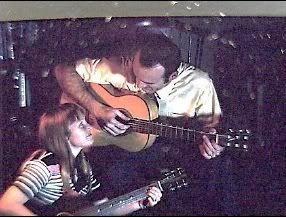 That’s when I first met and fell in love with him. One of our great intellectual and emotional bonds was our interest in technological means of extending life. Fred and I incorporated the Alcor Life Extension Foundation in 1972; the minutes of those early Alcor meetings can be viewed by those who might be interested. Many details from those early years are available on Wikipedia.
That’s when I first met and fell in love with him. One of our great intellectual and emotional bonds was our interest in technological means of extending life. Fred and I incorporated the Alcor Life Extension Foundation in 1972; the minutes of those early Alcor meetings can be viewed by those who might be interested. Many details from those early years are available on Wikipedia.
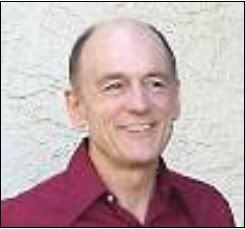
The photo to the right shows Fred in his 60’s when he and I were again active in Alcor between 1997 and 2001.
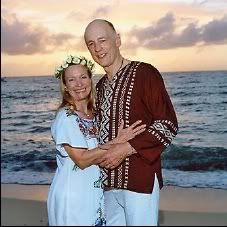 The picture on the left shows us in 2002 when we renewed our wedding vows on a beach in Cozumel with a traditional Mayan wedding with both of us wearing traditional Mayan wedding dress.
The picture on the left shows us in 2002 when we renewed our wedding vows on a beach in Cozumel with a traditional Mayan wedding with both of us wearing traditional Mayan wedding dress.
Inspired by the Mindfile tools and programs being developed by Terasem (including but not limited to CyBeRev.org and LifeNaut.com), and seeing Mindfiles as an absolutely essential part of any personal life extension plan, we moved to Melbourne, Florida in 2010 to contribute as much as possible to the Terasem Movement while we remain in biological bodies, and then continue doing so when emulated as cyberbeings. We made a presentation about Cybertwins at Terasem’s 5th Annual Colloquium on the Law of Futuristic Persons in Second Life (on Terasem Island), on December 10th, 2009.
Fred recently had his brain placed into cryostasis at the Alcor Life Extension Foundation in Scottsdale, to preserve his Connectome as additional Mindfile information. Though I will have to carry on alone for both of us for a short while before we see each other in cyberspace, Fred is still part of all of us in the Terasem Collective Consciousness and we will continue to enjoy his warm creativity again soon as well as through his poetry and many writings.
As they say on the Star Pebble, See you in the next cycle.
With all my love,
Linda Chamberlain
To view online with active links: http://www.lifepact.com/OdeToFred.pdf

Thank you for your reminiscences about Fred, Mike. Unfortunately they feed my sense that the development of cryonics has depended too much on a contingent historical situation in the early 1970′s which we would have trouble finding equivalents to now if we want to keep cryonics going. People born since 1990 or so probably consider their elders’ talk of “voyaging into space and conquering the stars” as, well, paleofuturistic, when even the rudiments of doing so don’t correspond to their reality; yet this idea lies close to the motivations, dreams and ambitions of many of the older cryonicists who continue either to go into suspension or to fall by the wayside. Many of us gravitated to cryonics in part because of expectations about surviving to an era where we could possibly do the sorts of things we read about in science fiction published 50-60 years ago. I’ve noticed the emphasis on space settlement, for example by Thomas Donaldson, from reading the issues of Long Life Magazine published in the late 1970′s which Dave has in his Venturist Library. [That magazine has other kinds of paleofuture ironies I plan to write about, like Dr. Benjamin Schloss's "Project '89," his proposal to stop aging in humans by 1989(!), even though Schloss died soon after writing that article.]
A recent Alcor publication features a histogram which suggests that Alcor has a membership with a median age in the low 40′s:
http://www.alcor.org/Library/images/inflation4.gif
But that doesn’t seem to reflect the ages of the people doing the hands-on work. Why don’t we see more people in their 20′s and 30′s who have taken on cryonics with the kind of fervor you, the Chamberlains and others displayed at one time?
The more technically inclined Gen-Y’s (people born after 1980) seem to gravitate towards I.T. stuff and are susceptible to the fantasies of uploading, A.I., and the like. They regard space development as passe, because living in a virtual reality fantasy world will make it superfluous (my sarcasm should make my attitude towards this obvious). However, there are exceptions. Musk, founder of SpaceX, is relatively young. Generally, though, you are correct.
Most of the fusion stuff I’ve been following (IEC polywell, Tri-Alpha, etc.) is being done by guys in their 50′s and 60′s. Same for the Woodward-Mach stuff (Woodward is in his 70′s and Paul March is late 50′s). I notice this even in my own work. I do industrial automation (PLC-based control systems). I have noticed that almost all of the people in industrial automation are in their 50′s and 60′s. This is true for all of the Rockwell A-B guys I’ve met as well as the distributors, the Wonderware SCADA people as well.
It’s a characteristic of cohorts in cultures (generations) that they will share preoccupations. I don’t know if this good or bad, but I do know that it “is.” Right now, I think the emphasis is certainly not on “space” and that that the way that it is. It can’t really be changed, and for the moment it doesn’t really have to be. Environmental, economic and “knowledge/curiosity” pressures will eventually remedy that lack of focus for any healthy civilization. The GenY/GeNexters have been raised in a world of superabundance. That is not the case for the current generation. The superabundance for them is GONE. Looming is great geopolitical instability and the truly obnoxious use of technology to cause great harm and chronic fear. The GenY/GeNexters significance is mostly in the context of the irresponsible and clueless leadership they will likely exercise. The coming generation may well be suckling on a teat of want that makes them hunger for the very kind paleofuture Mark Plus is currently bemoaning as extinct. — Mike Darwin
“The GenY/GeNexters significance is mostly in the context of the irresponsible and clueless leadership they will likely exercise.”
I’d take exception that dubious, sweeping generalization since I and the vast majority of my personal friends and colleagues are among that generation…But I know that you don’t have a very good track record when it comes to perspective and predictions regarding politics.
I have a deep and fundamental respect for your points of view when they’re based on more than the barest shred of secondhand knowledge.
The Instapundit blogger Glenn Reynolds (b. 1960) belongs to our generation and thinks more like us, though he seems too enamored of the Singularity idea for my comfort.
In his column in the April 2012 issue of Popular Mechanics Reynolds writes about the blown opportunity over the past generation to get youngsters interested in space tech, and how this failure could have existential consequences: “Facebook probably won’t save us from economic stagnation; it certainly won’t save us from an asteroid.”
On the other hand, I like to see the Gen-Y’s interest in making these new digital gadgets medically useful, as in Qualcomm’s Tricorder X PRIZE.
The way we older cryonicists must sound to younger people by now, we’d have to change the caption on this cartoon,
http://scienceblogs.com/pharyngula/upload/2011/02/reprotech.jpeg
to something like, “In my day, we thought we could extend people’s lives and conquer outer space by freezing them in liquid nitrogen,” or words to that effect.
Don’t get too hung up on the Paleofuture shtick, Mark. Ideas have an ebb and flow in cultures. Hell, cultures have ebbs and flows and even extinctions. If becoming a spacefaring species was a fad, like lava lamps and love beads, then its not the people that embraced that “fad” who were passing, it’s this species, plain and simple. Don’t conflate silver lamaze clothes and atomic rocket ships with fundamental ideas that are essential to our survival.
The idea of spaceflight has been repackaged and successfully resold at least half a dozen times. I’ve seen it done twice, and maybe three times in my lifetime. As a kid, I saw the Disney-von Braun version, then the Kennedy-NASA version and, arguably, the O’Neill version. There will be others – if our species is to survive.
You are right to be frustrated and maybe angry that cryonics has the stench of techno-failure about it. When I was in Soho, London last summer I was in a bookstore and I came across a book, BEAUTY IN DECAY which made me think about cryonics. I wanted the book very badly, but didn’t have the money at the time, which was fortunate, because I eventually got it here in the US for a couple of dollars. The book is a set of haunting photographs, many of buildings, machinery and technological infrastructure falling to ruin from neglect and the ravages of time. That is the best possible fate that can befall cryonics if we do not get our act together and kick this culture in the ass.
It’s one thing to fail having gnawed and clawed and fought. It’s another thing altogether to have have done so going out sipping tea on a velvet sofa, whilst reassuring ourselves about what clever, handsome little apes we were. — Mike Darwin
Speaking of techno-failure: You wrote for Long Life Magazine along with Thomas Donaldson in the late 1970′s, Mike. Thomas published an article in one issue with a table showing that he thought we’d have a cryosuspension rate in the year 2000 of 10,000 people per 10 billion population. We had a global population of ~ 6 billion that year, so Thomas’s figure implies that we should have had 6,000 suspensions in 2000. Did that estimate reflect the opinion of cryonicists back then about cryonics’ growth rate?
The cryonics community was never very cohesive. Wasn’t then; isn’t now. This is a problem. I suppose it has some advantages too. I mean, imagine if it was utterly cohesive in Nelson’s day?
Art Quaife and those around him in Trans Time (TT) in the mid-1970s sincerely believed that TT was going to be the “IBM of the ’90s.” That’s a direct quote. In which case there should be tens of millions of people cryopreserved about now. I think Thomas and I were probably pretty far apart on this one, and here’s why I say that. I’m not a numbers person. I have only the vaguest grasp of the world in numerical terms. In fact, I was stunned to learn it was Saturday today – more stunned to learn what day of the month it was. Having said that, if you cast you mind back to, say, 1984 and you look at the growth rate for Alcor – just Alcor – in terms of members and patients, take 20% off of that, extrapolate it to today, then that’s about where I thought then (and think now) we should have been. I don’t know how closely that comes to Thomas’ number for patients in cryopreservation – because I never really thought in those terms. The idea of patients in cryopreservation has always horrified me. “Converts” uplifted me, patients horrified me.
That may seem a rather malignant or callous attitude to have. And it would be, if it were accompanied by the attitude that I didn’t want to try and save every single dying individual person who was reaching for cryonics that I could. But that is very different than setting out as a goal to just recruit lots and lots of patients, per se, as in say, doing outreach through mortuaries or intensive care units! BTW, I’m bracing myself for just such a mad scheme any day now.
If memory serves me, I think projections for 2010 in terms of members were something like 4K to 6K, the latter being pretty optimistic. I know that in the early 1990s Ralph Whlean did a projection out to I think, 2005 or 06, and he put the patient population at around 400, which I though was very high at the time. So if Thomas was projecting 6K by 2000, I don’t think I’d have bought that in say, 1978. But then, historically, I’d say I have been the the most pessimistic person in cryonics about the likelihood for the growth and acceptance of cryonics. Until now.
No, I don’t think cryonics is going to sweep the planet and become the next Marxism or the next i-anything. As I’ve long and often said, suspended animation could be developed and proved out tomorrow, and it would be still be decades before its widespread, let alone universal implementation. These are ideas as big as antisepsis and anesthesia which took easily three decades to reach global acceptance. Even birth control is far from fully accepted today!
The problem with cryonics now is wholly endogenous, not exogenous. It’s an internal moron problem not an external moron problem. The culture has lots of niche space for cryonics. It’s true, that the temper of the culture is pro death and suicidal, but it is also a very disorganized and wealthy culture – it is NOT North Korea! There is lots of wiggle room. The problem is this distracted, foggy, disorganized, moronic and utterly ineffective “leadership.” No ideas, no energy, no insurgency, no activism, no nuthin.
So now, at this late (for me) stage of the game, I find myself in the peculiar position of saying, “You’ve got to be kidding me. I’ve never seen more favorable conditions for growth. There are, by comparison to the first 30 years, MASSIVE numbers of scientists supporting our position, there are increasing amounts of DIRECT evidence supporting the viability of cryonics, there are DOCUMENTED ultrastructural studies demonstrating preservation of brain synaptic connectivity…NONE of that was available when we were growing EXPONENTIALLY in the early 1980s. So, who’s FAULT is that?
Recently, one of the people from the cryonics organizations contacted to me to inform me that “March was going to be research month.” One can only wonder what they use the other 11 months of the year for there. This person wanted to know what I thought were the most important research priorities in cryonics? As it turned out, there was no real interest in an answer to that question, at least not from me. I did incidentally, have an answer (there were several) to the question and I offered to give them, but was I was never asked. I wonder what their answer(s) will turn out to be? Oh, BTW, if you want mine, all you have to do is ask – but you do have to ask.– Mike Darwin
“Why don’t we see more people in their 20′s and 30′s who have taken on cryonics with the kind of fervor you, the Chamberlains and others displayed at one time?”
The answer to that is simple, it’s the implementation that’s complex: You have to be inspired to be inspiring. I’ve really held back in writing about Fred Chamberlain for a lot of reasons, many of which I’m not comfortable talking about at this time. But one thing I’ve said before and can certainly say again is that Fred was an inspiring man.
I had two “dads” in cryonics, one was Curtis Henderson and the other was Fred Chamberlain. Curtis was a Charles Addamsesque kind of dad who froze dead bodies; the kind of dad who would take you to saloons, to mortuaries, to places where girls with long hair named Suzie Cream Cheese sat in a room full of mattresses along with guys with long hair and no shirts. Fred was a Robert Heinleinesque kind of dad who took you meetings where people talked about universes where the guys who created intellectual property ran the world and this stuff called polywater made suspended animation practical and everybody had gold bullion in a safe and it was perfectly normal to have a cryogenic dewar to store your dying father’s head in stashed in a shed behind your modest suburban home.
Now both of those dads were absolutely barking, crazy mad by any objective criteria. But they were also inspiring. Curtis Henderson was a lawyer and an absolutely amazing student of history – particularly the history of warfare and capitalism. He was a pilot, a welder, and a superb craftsman with both metal and wood. He also had a great intuitive understanding of mechanical systems – he could pull and repair auto and boat engines and he understood the basics of cryogenic engineering. Fred Chamberlain was an I triple E, but he wasn’t just a theoretical guy – just like Curtis he had enormous hands skills. He could solder, weld, and had enormous facility with a wide range of electronic and mechanical systems. What’s more, his expertise extended into the range of chemistry. And like Curtis, indeed more so, Fred was able to troubleshoot and repair almost any electrical or mechanical device that existed in the 1970s.
Both of these men were incredibly impressive. They were impressive to other men their age or older and they were mind blowing to young men or teenagers; just on the basis of their knowledge and their skills sets. But beyond that, they were both intensely engaged with and passionate about both life and cryonics. There was none of this “academic remove” about either of them. When they had fire in their belly you knew it – you couldn’t help but know it. They were excited about cryonics and it leaked out of them in countless ways. That they were remarkable people with remarkable talents and abilities made that “leakage” electric and irresistible.
Nothing has changed. We’re still working on that time machine. Right now, I’ve got a really straightforward and incredibly important and pressing research project critical to cryonics that needs to be done. I’ve even got some incredibly subversive and insurgent rejuvenation projects. They’re much, much wilder than the one Fred and I discussed on the phone that summer night 40 years ago in front of the Piggly Wiggly in Augusta. They just have to be electrified and sold. — Mike Darwin.
You know, I want to say a little bit more about this and about Fred. Here was this fantastically bright and talented man and he would go off to work at JPL everyday. Now, keep in mind he was working at very edge of what was possible in his technological domain. Fred was in charge of the sun sensor/ Canopus tracker on the Voyager spacecraft and we corresponded about that in the months before he was cryopreserved. I want to share with you some of what he wrote: “On the Voyager subject, your email inspired some photographing of an old sun detector I’d taken with me (it was by that time, considered to be ‘scrap’) when I left JPL. I’d glued it to a ‘group’ certificate that arrived in the mail, somewhat wrinkled, a few months after leaving JPL to move to Tahoe, but as you’ll see from the closeup photos of it, where there are solder joints indicating that at one time it had been installed in a full-up sun sensor assembly, it’s one of those that might have flown but probably was removed, due to some performance problem in subsystem testing. Anyway, it’s one of those artifacts from the past with some significance, probably of the same kind as that sun detector you remember that very well might have been fully flight-qualified and have ‘made the trip’ as one of the four that actually flew (two per spacecraft, for biaxial stabilization).
One of the interesting things about the sun detector program was that the development program finally led to a production process involving about seventeen different steps of thin film depositions on the black glass substrates and heat treatments between depositions, with areas of corruption on the detector surfaces which made various detectors unsuitable, depending on the areas involved and how they were installed. Nevertheless, by knowing which parts of the detectors had to be most accurate, and by accelerated life testing to see if the corruption problem would progress or remain stable, choices were made so that in the end it was possible to use detectors that were imperfect in some respects, but functional enough in the essential fields of vew to be satisfactory. The very best detector of all was never flown. Why not? Because it was so good it could have replaced any of the others if one had failed in final system test, so it was the only one versatile enough to serve as the final and ultimate backup against a last minute failure prior to launch.
Even more fascinating, perhaps, was the fact that to solve a two to three hundred thousand dollar overrun on having to make extra detectors and investigate the corruption problem, a decision was made to eliminate the “auxiliary sun sensors” that generally would have been used to roughly position the main sun sensor for fine control. Instead, a “roll search” strategy was used with the gyros to find the sun with the relatively narrow angle main sun sensor. Many of those in the decision process were worried. “We’ve never flown a spacecraft without auxiliary sun sensors!” was the conservative argument, but the budget was tight enough so they “threw the auxiliary sun sensors off the spacecraft”, and relied on gyro acquisition. It worked just fine.”
You can sense his engagement and interest in his work at JPL in the paragraphs he has written above. And yet, I have but one overriding memory of that time: his desire to be free of his job at JPL and to work full time on cryonics. In fact, to work full time on cryonics and to never look back. So, here’s this guy working on interplanetary spaceships – two of them if you’re counting – and all he can think about is cryonics! That really happened. And here’s the pity. At that time in his life Fred was uniquely positioned to have made a huge contribution to cryonics. He knew it and so did all of us. That was a great part of the frustration of being a cryonicist in his position at that time. You could see that no matter how hard you worked, no matter how great your struggle, you were always going to be performing at a small fraction of your rated capacity. So I would say of Fred Chamberlain that he was at once an Atlas who hurled clockworks at the stars and also a Sisyphus constrained to keep a boulder in its groove. Any way you look at them, both are damned impressive feats. — MD
How did Fred predict his ETD (estimated time to deanimation) so accurately? He spent a very tightly scheduled single week at the Scottsdale hospice. Usually, standbys are not estimated that accurately, are they? If there was intellectual honesty in cryonics, Alcor would publish a graph of the standby times for all cases over time. That would help in costing as well as in determination of physical constraints. Bottom line: I see the possibility of another cryocide here, as I suspected with Ettinger.
Mike Perry wrote that Fred sympathized with Arlene’s “proactive legal death”:
quote
One public case of this sort was Arlene Fried who was cryopreserved (as a neuro or head-only, the rationale being that future technology could very likely create the missing rest of the body) at Alcor’s facility in Riverside, California in June 1990.1 Ms. Fried, who is Linda Chamberlain’s mother, had the loving, attentive support of her daughter and her son-in-law Fred Chamberlain, two cryonics pioneers who well understood and sympathized with her views and what she was attempting. Ms. Fried, terminally ill with cancer that had metastasized to the brain, was cared for during approximately 10 days while her VSED was in progress, receiving only some moistening of her lips and mouth from time, and very limited amounts of fluid internally. She persevered and accomplished her mission of proactive legal death and cryopreservation, escaping both the ravages of the tumor in her head and the autopsy that would have followed had she chosen an easier “exit.”
unquote
source
http://www.alcor.org/magazine/2012/02/17/options-for-elective-cryopreservation/
My comment: I can predict that readers here will naturally attempt to dismiss and even discredit me here (again) on this way of thinking. This post may even be deleted for “speculating” on this matter. However this is “substantiated speculation”– not “unsubstantiated speculation”. Cryonics processing continues to be submerged in its finer details and considerations “until it’s big enough to protect itself”, it has been said. My personal opinion is that publishing the truth, the WHOLE truth, and nothing but the “significant truth” related to the crux of the matter we’re concerned with is always the best way forward. It would garner more public attention (and criticism of course) but at the same time, it would create more interest and potential for success.
For the record, my 50K insurance is still being left to Alcor in my “PALM” program… pre arranged last minute. http://rickpotvin-cryonet.blogspot.com/
Reanimation scenarios cannot work without taking the oncoming ice age into account. http://iceagecryonics.blogspot.com/
I don’t know the particulars of Fred’s situation, but nothing strikes me as unusual about it. From what little I’ve heard, he had an unexpectedly long agonal course once admitted as an inpatient. Fred was “in hospice” for much longer than the time he spent as an inpatient.
For the past 20 years hospice has been evolving as a medical specialty, one of whose goals is to increasingly accurately prognosticate the time course of death. To do so, a number of objective scientific tools have been developed which are working with increasingly precision – especially with cancer patients. The prototypical one of these is the Karnofsky’s scoring system, which I have used myself for many years. Over the past decade it has been increasingly refined. I have reproduced the KPFSS that I used in the mid-1990s. Patients whose score is 20 are no more than 2 weeks away from deanimation. Patients with a KPFS of ~10 will almost invariably die within a week to 10 days.
Your speculations are based in IGNORANCE Rick, ignorance and a salacious desire for drama where there is only heartbreak and hard work. The KPFSS works so well in cancer patients it is stunning; not every time, but in a high percentage of cases. Unfortunately, it is not nearly as predictive for patients with congestive heart failure – at least not those still receiving some treatment for palliation, such as oxygen and diuretics.
Other than good clinical skills, the right tools, a bit of common sense, and often feedback from the patient, there is nothing more required to “predict” your checkout time so accurately. Oh, except for one more thing I forgot to mention: ENORMOUS COURAGE TO FACE THE FACTS. Most people who’ve seen a lot of people die of cancer, or other similar diseases, can easily tell you when the patient is in the last week of life. However, quite understandably, most people don’t really want to hear that news with any precision.
Finally, Arlene Fried was not Fred Chamberlain. Arlene had brain metastases, and she made a personal decision based on her circumstances that her quality of life was no longer acceptable in her dying condition. Ultimately, that’s what most slowly dying people do by deciding not to have a feeding tube placed, IVs started and other life support measures taken. I’m sure this will come as a shock to you Rick, but do you know what the actual primary cause of death is in most cancer patients? Malnutrition and dehydration. In Alzheimer’s Disease they have a quaint euphemism, adapted from pediatric medicine, which is exactly the same thing: Adult Failure to Thrive. — Mike Darwin
KARNOFSKY PERFORMANCE STATUS SCALE
DEFINITIONS RATING (%) CRITERIA
Circle the appropriate score.
Patient Name: Date: ID:
Able to carry on normal activity and 100 Normal, no complaints; no evidence of disease.
to work; no special care needed.
90 Able to carry on normal activity; minor signs or symptoms
of disease.
80 Normal activity with effort; some signs or symptoms
of disease.
Unable to work; able to live at home and 70 Cares for self; unable to carry on normal activity or do
care for most personal needs; varying normal work.
amount of assistance needed. 60 Requires considerable assistance, but is able to care for most
of his/her personal needs.
50 Requires considerable assistance and frequent medical care.
Unable to care for self; requires 40 Disabled; requires special care and assistance.
equivalent of institutional or hospital
care; disease may be progressing rapidly. 30 Severely disabled; hospital admission is indicated
although death is not imminent.
20 Very sick; hospital admission necessary; active
supportive treatment necessary.
10 Moribund; fatal processes progressing rapidly.
0 Dead
% of normal pre-morbid weight:
Albumin/Total Protein: WBC: HCT:
Glasgow score:
PO Intake Score: (normal) 10 9 8 7 6 5 4 3 2 1 (none)
Fluid balance:
Scored by:
Well, if you mean that Fred, or I, or most decent and reasonable people think that it is both moral and legal for a dying person in misery to refuse food and fluids, even if it hastens their demise a little, then I heartily agree. It’s legal, it’s common practice, its humane and it is done by countless non-cryonicists every day. So, where’s the big issue or the drama?
The answer to that question is that there isn’t any – unless someone can cook up an inference that something sneaky, suspicious or underhanded was afoot. Who do that? I can’t begin to answer that question, but I can tell you that it is the last time you will ever do it here. — Mike Darwin
You wrote: “Recently, one of the people from the cryonics organizations contacted to me to inform me that “March was going to be research month.” One can only wonder what they use the other 11 months of the year for there.”
No need to be shy, Mike, That was me. You made that clear in another blog post. I do think about research in EVERY month of the year. What I was saying (which any reasonably reader would surely recognize) was that research would be top priority in that month. Your own writing suggests that, in your mind, *everything* is top priority all the time. Alas, that is an impossible guide to action.
Also, you are disingenuous when you wonder what “they use the other 11 months of the year for there”. You were president of Alcor for as long as anyone has been. True, Alcor was far smaller then. Even so, you must familiar with all the other priorities. If you were truly objectively interested in improving things, rather than in attacking, you would not say something like that.
“This person wanted to know what I thought were the most important research priorities in cryonics? As it turned out, there was no real interest in an answer to that question, at least not from me. I did incidentally, have an answer (there were several) to the question and I offered to give them, but was I was never asked. I wonder what their answer(s) will turn out to be? Oh, BTW, if you want mine, all you have to do is ask – but you do have to ask.”
But I did ask. In a March 9 email, you “asked for some sort of compensation scheme regarding my cryopreservation arrangements and research input”. So, I DID ask for your input. You put conditions on it. You wanted quid pro quo before saying anything. As I’ve made abundantly clear in related contexts, I remain open to compensating you for valuable results-based inputs. If you want compensation before offering even a sketch of a research proposal, you will have to tell me what you what. I’m not telepathic. (Nor is anyone else — one thing I suspect we can agree on.)
–Max
Great, then you can expect my reply here as post on Chronosphere fairly shortly. It will be a straight up exposition of what I believe is the most pressing research problem facing cryonics, how to determine if this is so, and how to determine its extent and frequency in what I believe will be a fairly straightforward and cost effective way. I’m not sure yet if any exposition on solving the problem is merited before it is first verified and its scope and severity determined. This is not meant to be a research proposal or a highly structured plan, but rather (hopefully) a good exposition of the problem and how to probe it further.
If you sent me a subsequent email, to my last one to you on the topic, I did not receive it and I apologize for the inferences drawn. That’s ever a problem when communication is poor and conditions adverse; there is a tendency (inevitability) to assume the worst. If this is the case here, I plead guilty. As you may know (and this is no joke) I’ve been (and continue) to have very serious difficulties with DSL access here which include hours long bouts of frequent disconnections (several a minute). This has played havoc with my correspondence and my productivity.
I have other, more sophisticated ideas, and certainly a lot more exciting ones. But I think it makes sense to lay out one idea at a time. This doesn’t mean that several projects cannot be pursued in parallel – especially if they require very different staff and resources. But, I think it makes sense to keep the consideration process linear.
I’m also sure I”m not alone in having ideas and hopefully good ones. I’d urge you and others to share those because, at least at this time in cryonics, interaction and brainstorming are likely to be more valuable than any hope of eventual commercialization. And, after all, as I can tell you from hard experience, a good idea, even proved out in the laboratory isn’t any guarantee of financial return or marketplace advantage — Mike Darwin
To Rick Potvin: “How did Fred predict his ETD (estimated time to deanimation) so accurately?”
He didn’t. He almost didn’t make it to Scottsdale. I’m not going to go into the details before clearing them with Linda. All I will say now is that we worked hard to ensure than Fred made it to a Scottsdale hospice in his last week (for now, we hope). He actually lasted a couple of days longer than we expected. As Mike notes, Fred’s strategy was completely legal — and incredibly strong, determined and principled — to refuse food and fluids until his body gave out. Fred (and Linda) were ready for him to go and enter the cryopreservation process, but his (remarkably well-maintained for his age) body wouldn’t quit. He would stop breathing for almost a minute, only to draw another breath. It took six days.
Fred may not have always made great decisions (who does?), but I can tell you that for a guy of his age he had a vascular system in good condition. Poor health habits leading to fragile blood vessels can be disastrous for cryonicists. Happily (given the context), Fred was perfused easily and well. He ALMOST didn’t make it to Scottsdale — but he DID, and he was cooled rapidly, perfused well, and will be cared for as long as it takes.
–Max
Pingback: Bon Voyage, Fred Chamberlain | methuselahunbound